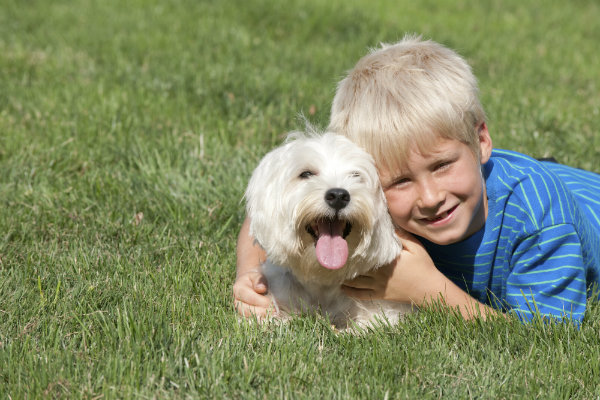Teaching Your Puppy About The Family Pack
Posted on October 15, 2012 by Joy of Living No comments

Bringing a new puppy home is a fun time for all. The kids are thrilled to have such a fun, furry friend and the parents are excited to have a playmate for the family. Then reality hits. Soon, it becomes clear that puppies and kids don’t always mix. The puppy and kids can be friends, but everyone must learn the rules of the “pack”.
The Leader
Usually, one of the parents will become the dominant ‘leader’ of the pack according to your puppy. You will be seen as the boss and puppy will look to you for commands. You will use this to your advantage during training and positioning the pack.
The Siblings
The puppy sees your children as equals, and may feel he has some control over the kids. This means the puppy will most likely treat them like he or she would other puppies. There will be little respect, some fighting (biting), some yelling (barking), and probably jealousy when it comes to attention of the parents.
The Competition
If children act excited around the puppy, he will see this as a sign of weakness. Playful behavior is expected, but uncontrolled excited behavior will confuse the puppy. This behavior needs to be corrected as quickly as possible.
The Chain Of Command
Your puppy needs to learn that they are not in charge of the kids. If this behavior isn’t corrected the dog will see the kids as their property and may try to protect them from other kids or people.
Puppy may also turn on your child if certain behavior is seen as unacceptable and may try to reprimand children by nipping or biting. Your puppy must learn you are in charge of everyone’s discipline. This is a good time to tell your kids what you expect them to do:
- Stand your ground – If your child is old enough, teach him or her to stand their ground when it comes to the puppy. If the puppy jumps they must not back up, crouch, or run away. They need to stand up tall, turning their back to show disapproval as well as protect their body, and showing they are actually in control and in charge.
- Never position yourself below or behind puppy – Laying on the floor with the puppy may seem fun, but within the puppy’s realm of understanding they are ‘above’ the child. The same situation occurs when entering the house. The ‘pack’ leaders and elders always enter the den first. When it’s time to come inside from playing, it’s parents, then children, then puppy.
- Tame your excitement – Puppy sees excitement as a sign of weakness.Train children to remain calm and in control. This doesn’t mean your child can’t play with the puppy. It means your child must have a calm voice and controlled movements to remain in charge.
- Hold back affection – If there is a problem, your child should not be showing puppy any affection until the problem is solved. This is very important as your child needs to show authority and dominance. If your child shows affection too soon, it will again be seen as a sign of weakness and you’ll have to start all over again.
Understanding, and living, the pack mentality can be a lot of work. Raising a puppy takes work, time, and patience. No one can deny the value of this training when you have a happy, well-adjusted adult dog that respects both you and your kids. This is a dog to enjoy!

Comments